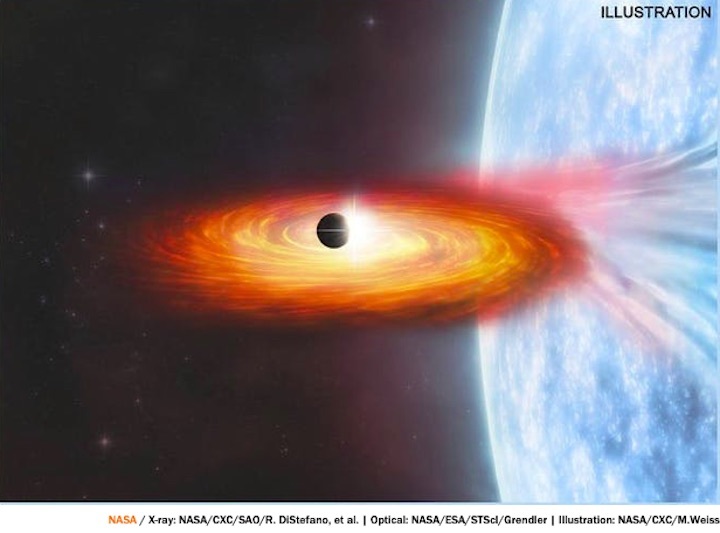11.11.2021

A group of researchers, including Julia Berndtsson ’23, reported finding evidence of the existence of a planet transiting a star in an external galaxy, marking the first such potential ‘exoplanet’ ever detected outside the Milky Way.
Berndtsson worked on the paper, which was published in Nature Astronomy late last month, alongside Rosanne Di Stefano of the Harvard-Smithsonian Center for Astrophysics and five other co-authors. The research was conducted using data from NASA’s Chandra X-ray Observatory, a space telescope launched on the space shuttle Columbia.
An exoplanet is defined as a “planet outside of our solar system” according to NASA. Correspondingly, exoplanet candidates refer to likely exoplanets detected by instrumentation but not yet proven to exist. The potential exoplanet candidate presented in this paper is located in the galaxy Messier 51 (M51), also known as the “Whirlpool Galaxy.”
The suspected exoplanet candidate is more than 28 million light-years away from Earth. In comparison, all known exoplanets in the Milky Way are at most 3,000 light-years away.
The paper indicates that the size of the exoplanet candidate is roughly equal to that of Saturn and it orbits either a neutron star or black hole that is approximately twice the distance between Saturn and the Sun.
Berndtsson and the team searched for X-ray transits as the method to detect exoplanets. Roberto Tejada Arevalo, a graduate student in the Astrophysics Department, explained this method in an email to The Daily Princetonian.
“Typically, a planet candidate (or PC) is a signal, or ‘dips,’ that has been observed repeatedly in the light of a star,” he said. “Since the primary discovery method for planet candidates is transits, it means we’re more likely to detect and confirm planets on shorter orbits.”
He added that “the X-ray signal from an X-ray binary (Black Hole or Neutron Star orbiting a giant star) shows a dip for about 3 hours, blocking almost all X-ray emissions during the transit. Since it's not estimated to transit in front of the companion object again for 70 years, confirmation will be difficult. Given this, it's a stretch to call it a PC for now given a large amount of false-positive detections for planets in our own galaxy.”
Co-author Nia Imara of the University of California at Santa Cruz echoed these limitations in a NASA post: “Unfortunately to confirm that we’re seeing a planet we would likely have to wait decades to see another transit. Because of the uncertainties about how long it takes to orbit, we wouldn't know exactly when to look.”
Berndtsson, an international student from Stockholm, Sweden, is a junior in the physics department. She worked on the research during the summer of her senior year of high school and later in the first half of her first year at Princeton. Di Stefano was Berndtsson’s mentor at the Research Science Institute in the Center for Excellence in Education.
“To a large extent the work since then has been to organize our thoughts so that the paper is convincing to our peer-reviewers and respond to their concerns,” Berndtsson said in an interview with the ‘Prince’.
“I have been fortunate to work with really amazing mentors who have encouraged me to pursue any ideas I have, and who have been patient through my learning curve,“ Berndtsson told the ‘Prince.’ “I had very little experience when starting this project so having the support of our team has been key for me personally.”
Berndtsson is now working in Professor Jason Petta’s laboratory, focusing on semiconducting qubits (‘bits’ used for quantum computers). When asked about her future plans, Berndtsson replied, “I’d love to keep working close to physics as a field either by going to grad school or combining it with industrial applications.”
Arevalo is hopeful for the implications of this research.
“In the future, we hope the X-ray community searches and is able to find more signals like this to learn more about what could be causing these X-ray dips,” Arevalo wrote. “If they are confirmed to be planets, this would open up another exciting area of exoplanet research questions, such as the formation history of these planets. How did they survive a core-collapse event, or did they form after the supernova? Do we expect such planets to exist in our own galaxy, and how do we look for them?”
However, there is still more to learn, explained Christopher Bambic, a graduate student in the astrophysics department.
“We have only just scratched the surface of the Chandra X-ray Space Telescope’s publically accessible archive of observations, and though they are likely rare, there may be other systems similar to M51-ULS-1b in the archives waiting to be discovered,” Bambic wrote to the ‘Prince.’ “These efforts open up the possibility of extending planetary science beyond our own Galaxy and thus provide a window into studying how other galactic histories may influence the formation and occurrence of planetary systems.”
Quelle: The Daily Princetonian
